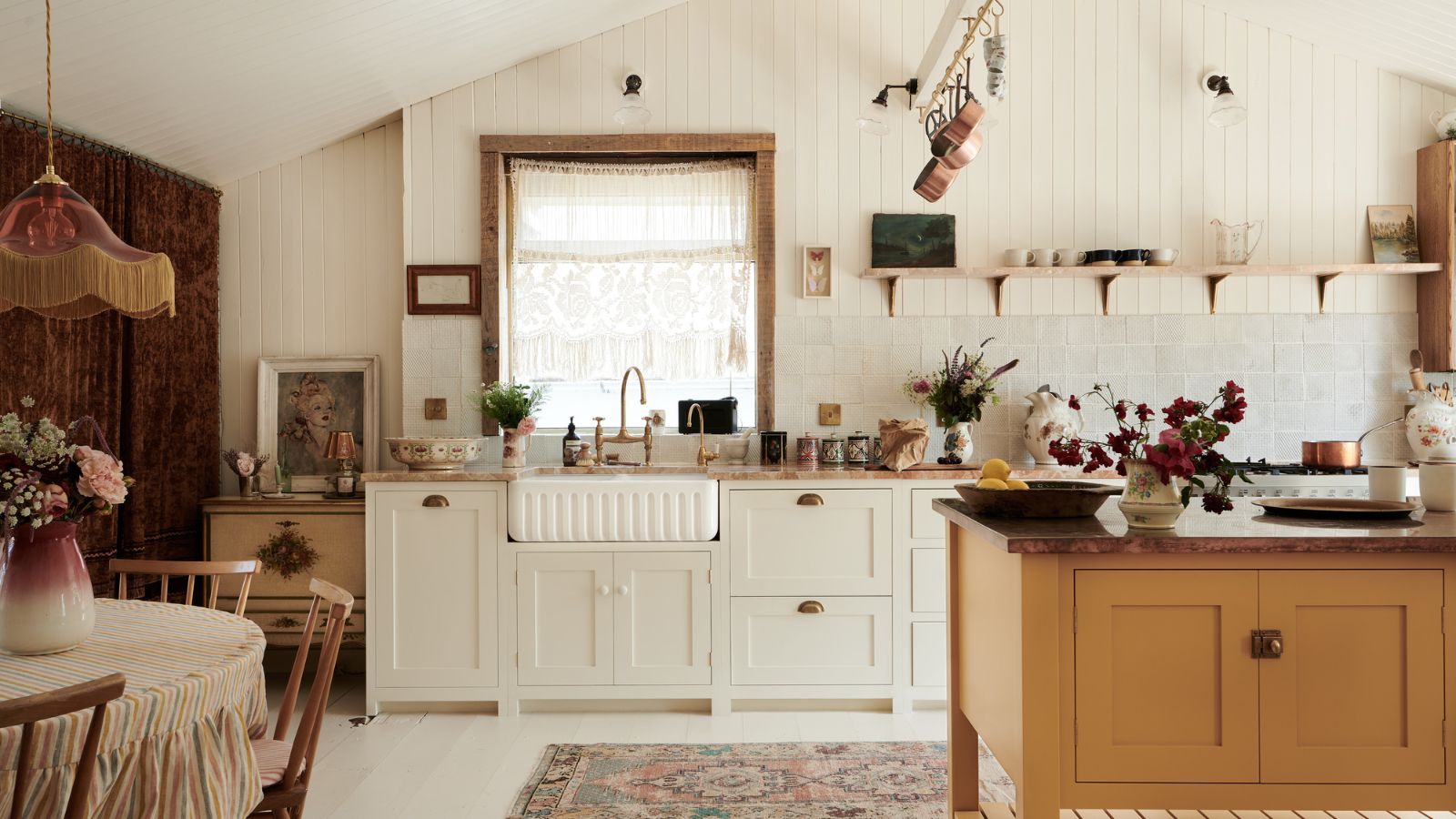
The details of a design can make a major impact on its overall success and the question of where your kitchen backsplash should stop is definitely one of the room’s important details.
Kitchen backsplash ideas create a functional and beautiful feature. Get the dimensions wrong, though – including how high it goes – and a backsplash can draw attention for all the wrong reasons.
To answer the question of whether a kitchen backsplash should go to the ceiling, we went to design experts, and this is what they told us.
Where should your kitchen backsplash stop?
While a backsplash’s practical purpose isn’t in question, whether it should go to the ceiling or where else it might stop instead are popular questions, along with issues such as how to end a backsplash on an open wall.
The latest kitchen backsplash trends include beautiful tile and other materials and if you follow this designer advice, you’ll make the most of them.
Go to the cabinets
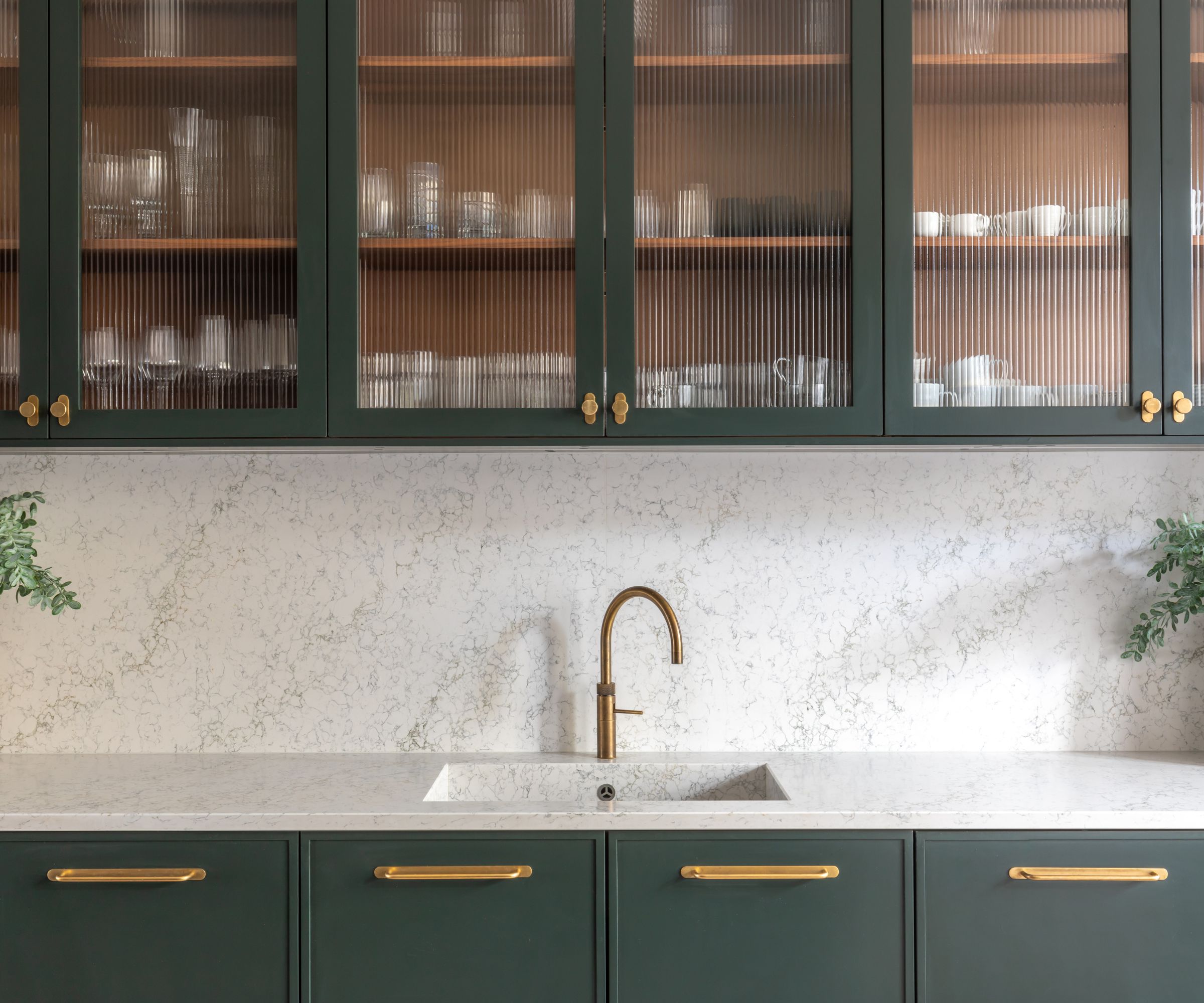
Using upper cabinets as a guide is an option many people favor. ‘The height of a kitchen backsplash depends on both functionality and aesthetics,’ says Elizabeth Vergara of Vergara Homes. ‘A classic choice is stopping at the bottom of the upper cabinets for a clean, structured look.’
Sabrina Phillips, owner of Designing Women of OC, agrees. ‘Tile or kitchen countertop material backsplash installed all the way to the bottom of the cabinets really elevates the kitchen aesthetic and value of the property,’ she says.
Consider ceiling height
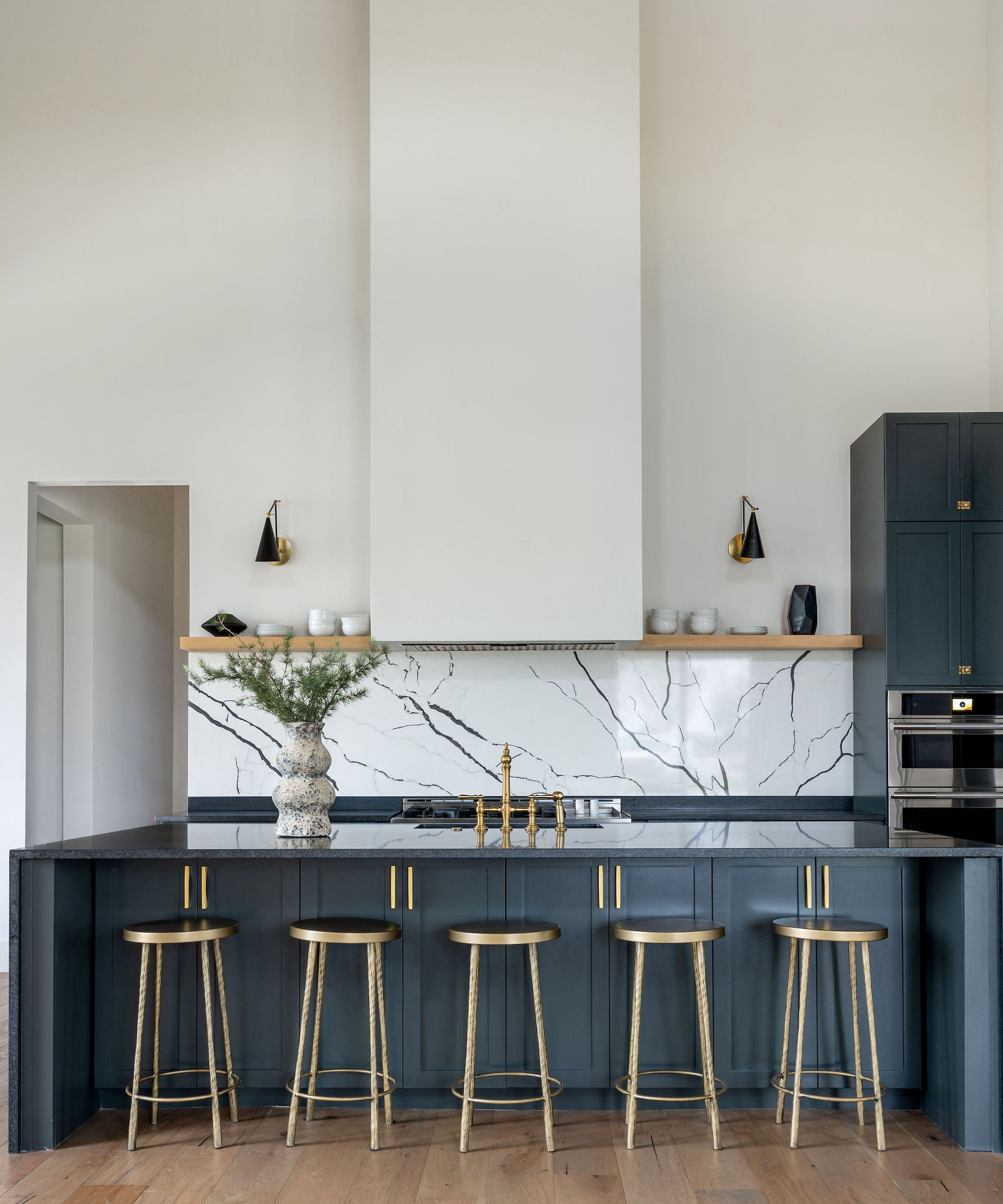
It can be crucial to consider the backsplash in relation to the ceiling height when deciding where it should stop.
‘In most kitchens, I recommend taking the backsplash all the way to the ceiling or to the base of the cabinets to add height and drama,’ says Micah Abbananto of Micah & Co.
‘However, in a space with cathedral ceilings, it’s a different story. At my Moody on Monkey Island project, taking it to the 30 foot ceiling would have been impossible. So, I chose to bring symmetry using the kitchen lights, backsplash, and cabinets to pull the kitchen in and create a balanced, cohesive look.’
Go up to visually expand the kitchen
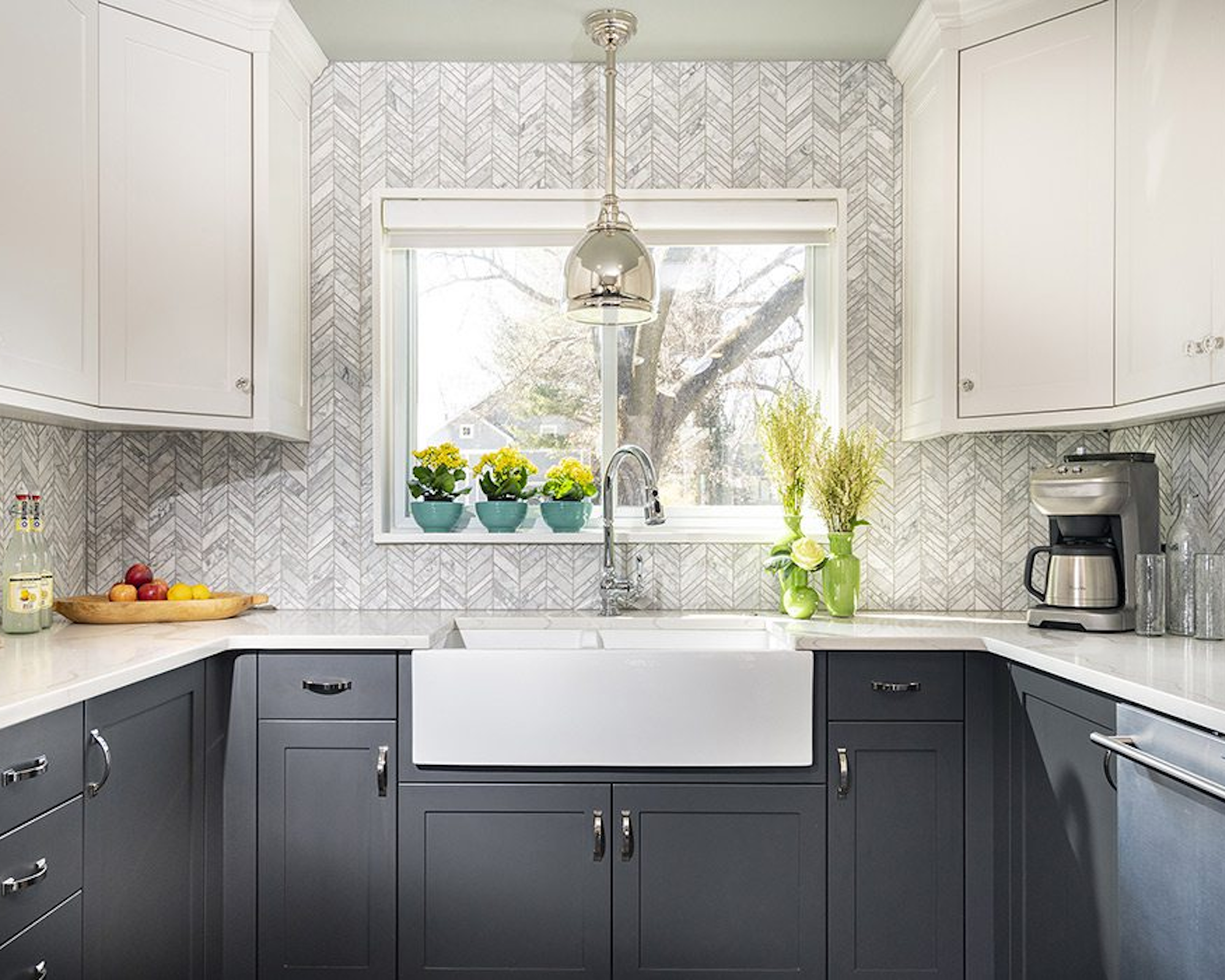
There are layouts that make a kitchen look bigger but take the backsplash up to the ceiling and it can also help to stretch kitchen space visually.
While Sabrina Phillips says that ‘backsplash height is always case by case, depending on the kitchen layout, cabinets, and appliances’, she sees an advantage in maximizing its height.
‘If you take the backsplash to the ceiling, it can often make the kitchen space feel larger and more consistent,’ she says.
Opt for a layered design
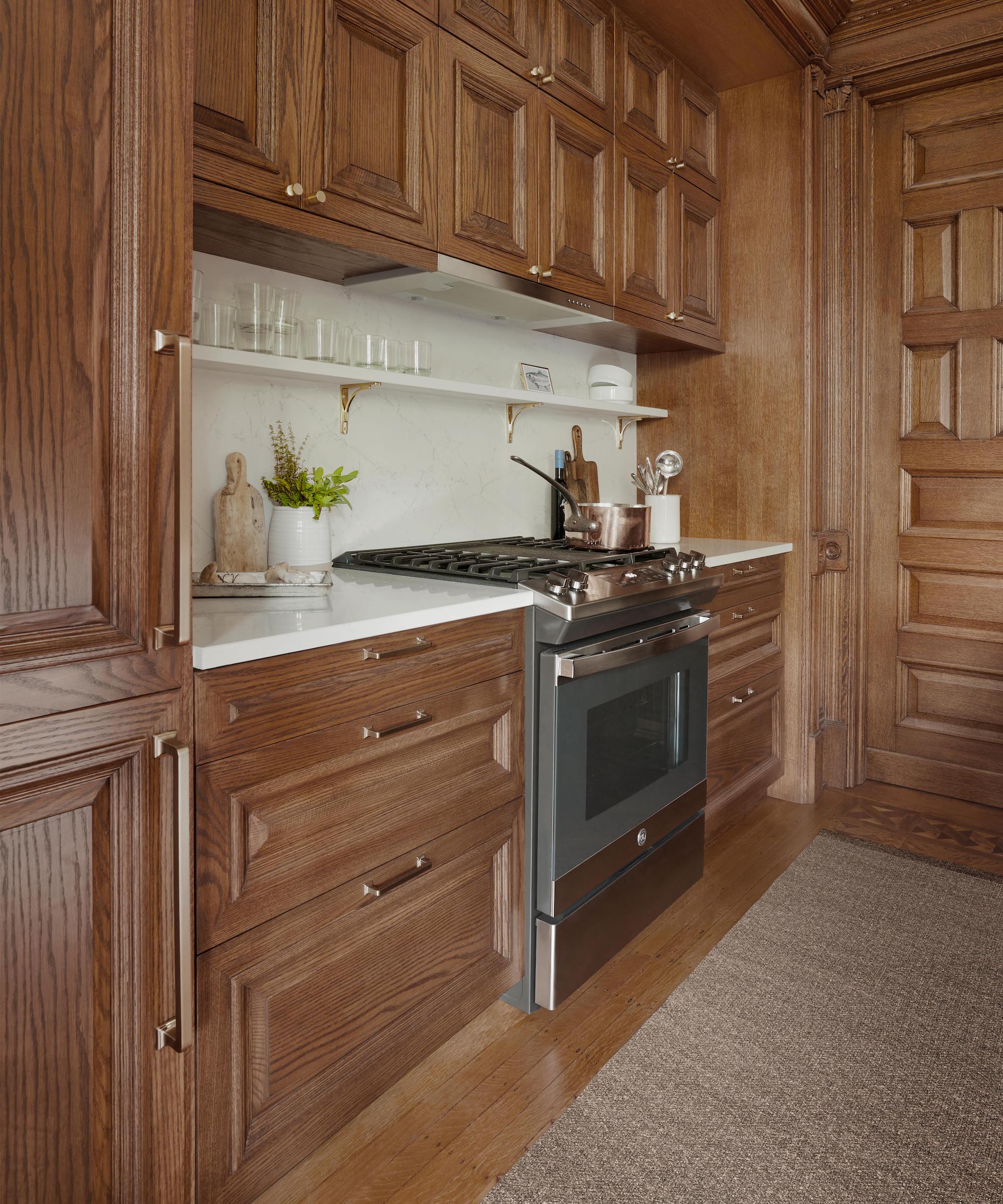
Another take on stopping the backsplash at the wall cabinets is using a kitchen shelf in the same material to create a transition between backsplash and cabinets.
‘The combination of slightly elevated upper cabinets with a shallow stone shelf matching the backsplash is a great and unconventional idea: the layered aesthetic makes the space more expansive and refined,’ explains Artem Kropovinsky of Arsight Studio of this Brooklyn kitchen. ‘It achieves a more open appearance.’
‘Use the shelf for decor, spices, frequently used items,’ he suggests. ‘The shelf made from backsplash stone creates a seamless transition between cabinetry and backsplash and adds a high-end and custom feel.’
Make it dramatic
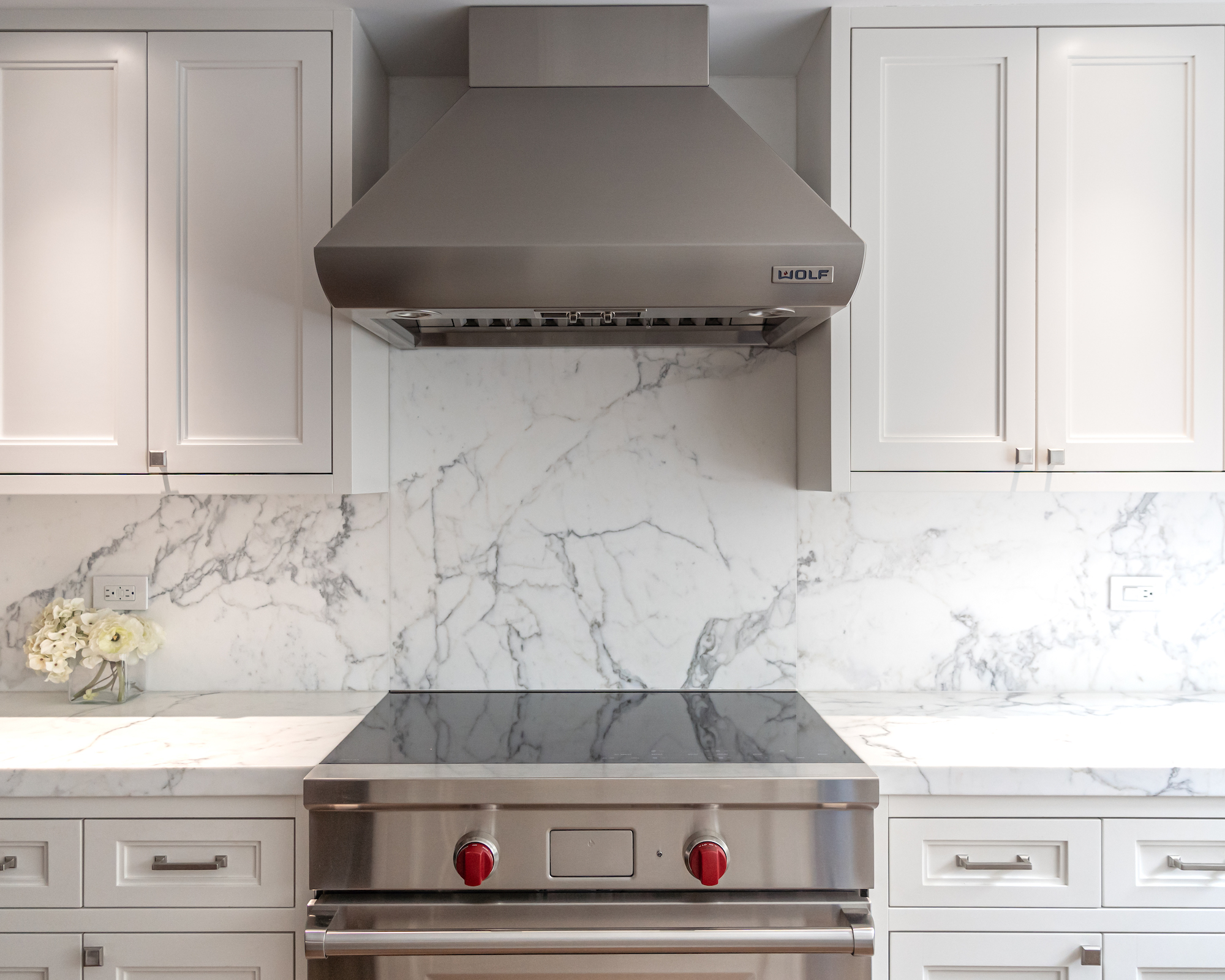
If you want to make the most striking impression with a backsplash taking it up to the ceiling is a top tactic – and it will make a kitchen look more luxurious to boot.
‘For a dramatic effect, taking the backsplash to the ceiling – especially behind a range or in kitchens without upper cabinets – creates a striking, high-end feel,’ says Elizabeth Vergara.
Mix heights
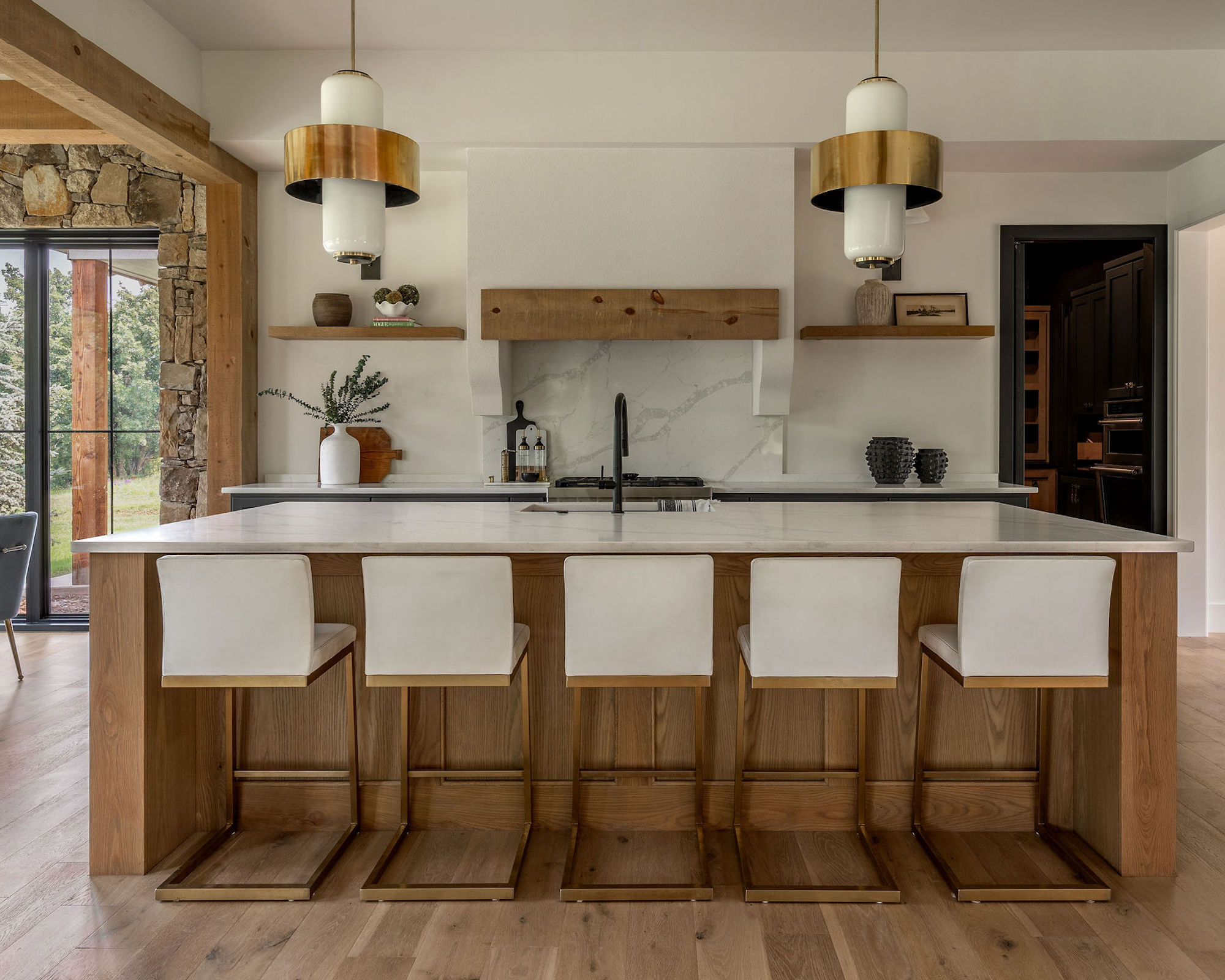
You don’t have to opt for a single backsplash height across the wall. If the kitchen’s design demands, the backsplash can stop in different places.
‘At my Ivy Ranch project, there were no upper cabinets, so we took a different approach,’ explains Micah Abbananto. ‘We incorporated open shelving and took the backsplash all the way up only behind the range. This adds function and personality, keeping the space simple yet open and making it feel warm and inviting without being too busy.’
There’s not just one answer to the question of where a kitchen backsplash should stop. ‘Ultimately, the best height is one that enhances the overall design while providing practical protection,’ says Elizabeth Vergara.







